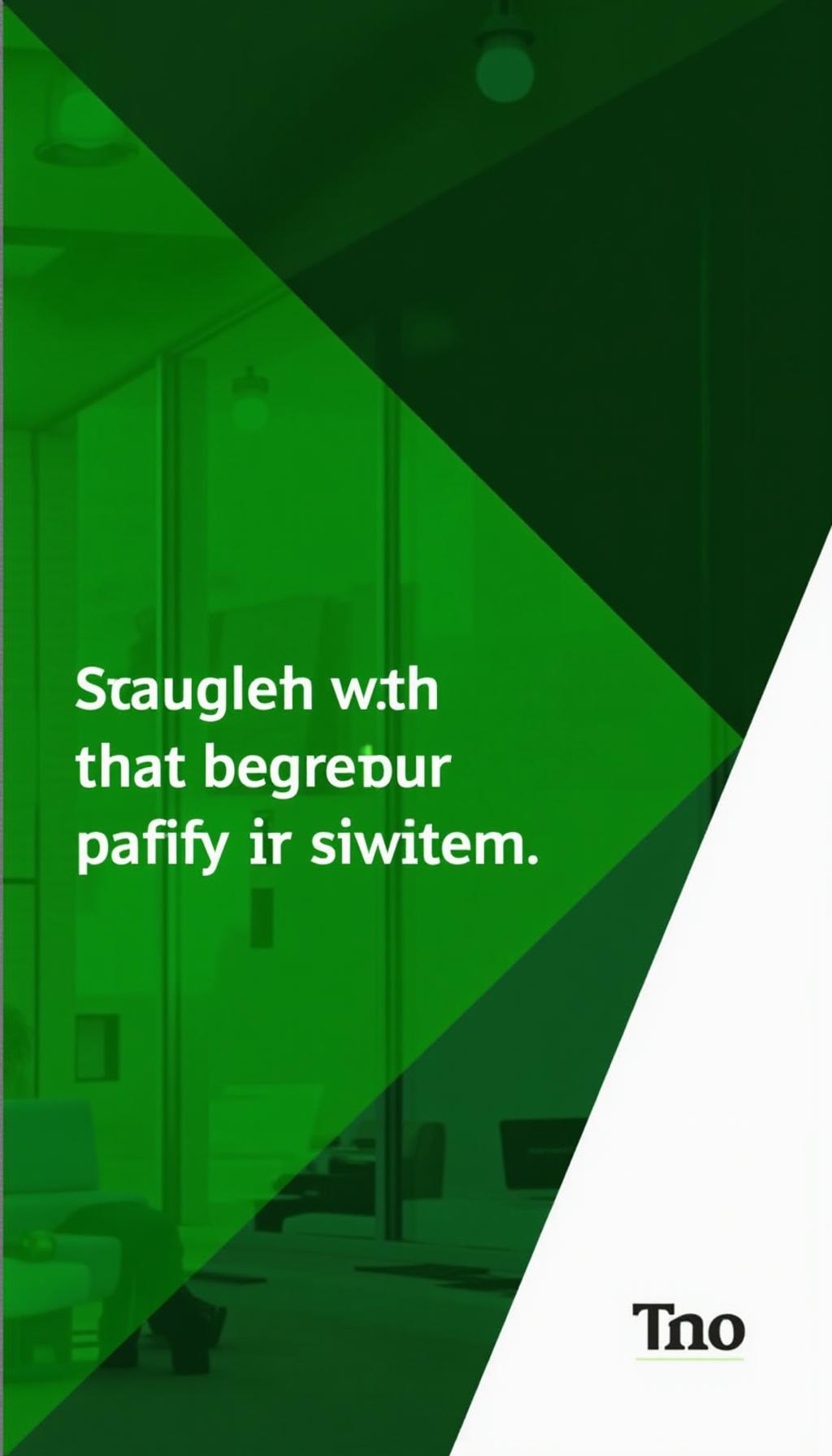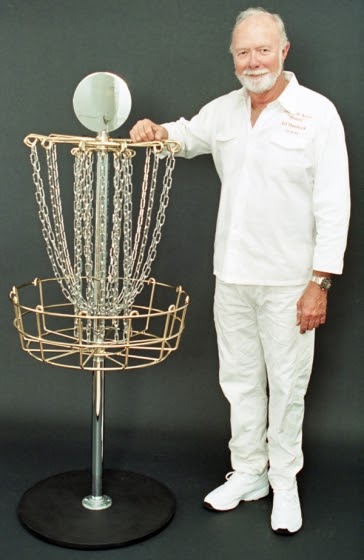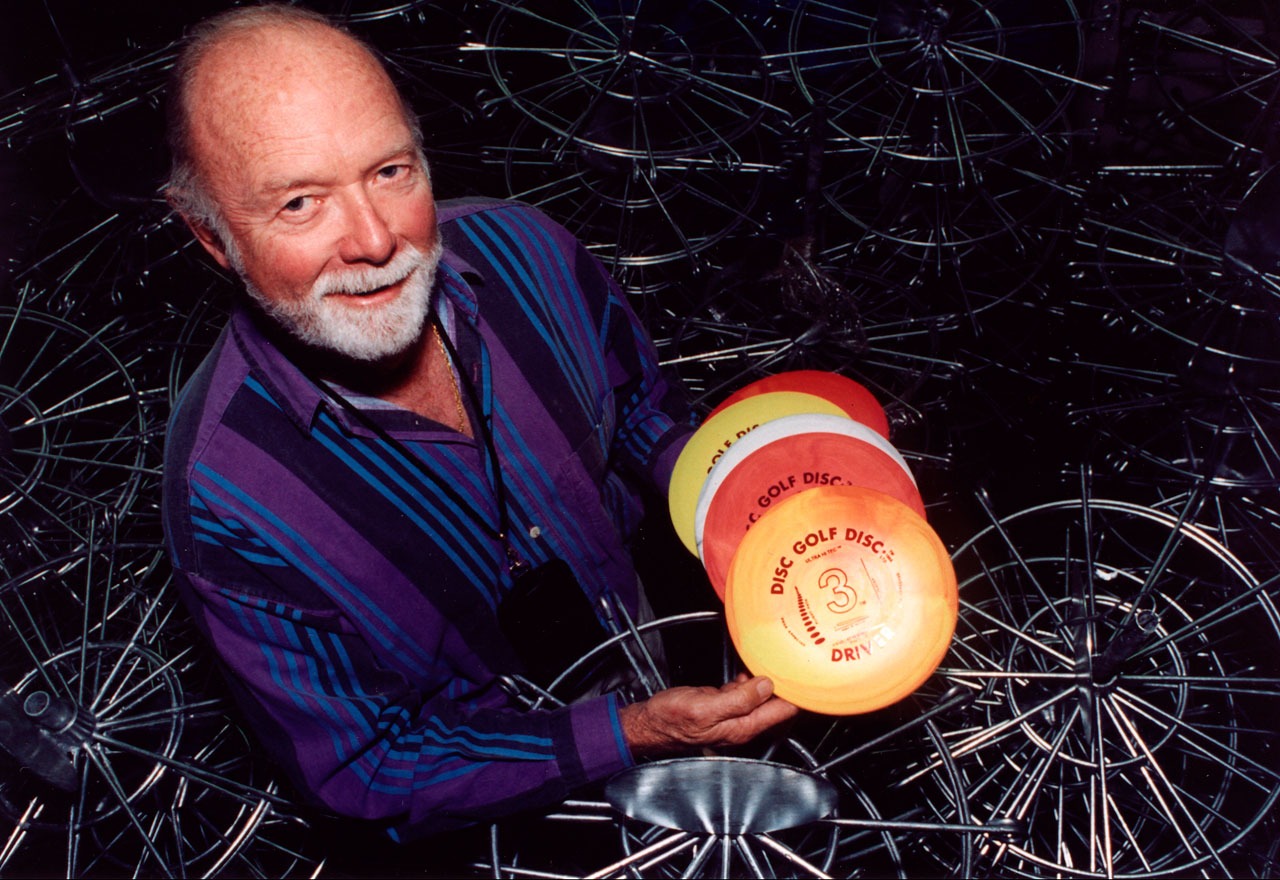As an Amazon Associate GolferHive.com earns from qualifying purchases.
Who Created Disc Golf? The Definitive History
Have you ever wondered about the true origin of disc golf? You’ve likely heard a name or two, but the full story is often debated, leaving a fuzzy picture of how this global sport actually came to be. If you’re looking for the definitive answer to who created disc golf, you’ve come to the right place.
While various groups played informal “Frisbee golf” in the 1960s, “Steady” Ed Headrick is unequivocally credited as the “Father of Disc Golf” for inventing the standardized basket, founding the sport’s key organizations, and formalizing the game we know today.
This guide cuts through the noise. Leveraging extensive analysis of historical records, patent filings, and official accounts from governing bodies like the PDGA, we will unpack the complete history. We’ll explore the earliest forgotten games, celebrate the pioneers who kept the spirit alive, and detail the specific, game-changing contributions of the man who turned a hobby into a legitimate sport.
Key Facts
- The Definitive Creator: “Steady” Ed Headrick is officially recognized as the “Father of Disc Golf” for his foundational work in formalizing the sport, as confirmed by the Disc Golf Association (DGA) and Professional Disc Golf Association (PDGA).
- The Earliest Game: The first documented instance of a disc golf-like game was “Tin Lid Golf,” played by Canadian schoolchildren in Bladworth, Saskatchewan, in 1926.
- The Game-Changing Invention: Headrick invented the “Disc Pole Hole” (U.S. Patent #4,039,189), the iconic chain-and-basket target that standardized play and eliminated scoring disputes.
- The Year of Formalization: 1976 was a pivotal year when Headrick founded both the Disc Golf Association (DGA) to produce equipment and the Professional Disc Golf Association (PDGA) to govern the sport.
- Global Popularity: The United States is the epicenter of disc golf’s popularity, accounting for 75% of all disc golf courses worldwide.
Who Created Modern Disc Golf? A Definitive History
While multiple groups played variations of disc golf in the 1960s, “Steady” Ed Headrick is unequivocally credited as the “Father of Disc Golf” for formalizing the sport, inventing the standardized target, and founding its key organizations.

The history of disc golf isn’t a straight line with a single starting point. It’s more like a river fed by many small streams. Before the sport had a name, a standardized target, or official rules, passionate individuals across North America were already tossing discs at targets. However, one person channeled all that scattered energy into a unified, legitimate sport.
According to the consensus from authoritative sources like the PDGA and DGA, the title of creator belongs to one man: “Steady” Ed Headrick. He is the architect who designed the blueprint for modern disc golf.
So, if Ed Headrick is the definitive answer, why is there any debate at all? Let’s explore the roots of the game.
The Early Seeds: Disc Golf Before “Disc Golf”
Long before its formalization, the concept of disc golf emerged independently in various locations, starting with “Tin Lid Golf” in Canada in 1926 and evolving through informal “Frisbee Golf” games in the 1960s organized by pioneers like George Sappenfield and Kevin Donnelly.
The idea of throwing a disc-like object at a target is not a new one. Decades before Headrick’s involvement, various groups were playing games that were, in essence, disc golf. These early efforts were disconnected but shared a common spirit of fun and competition.
- 1926 – Tin Lid Golf: The earliest known instance occurred in Bladworth, Saskatchewan, Canada, where school children played a game using tin lids as discs, aiming for 4-foot circles drawn in the sand.
- Early 1960s – California: Kevin Donnelly was an early coordinator, organizing Frisbee golf tournaments with hula hoops as holes as early as 1961.
- 1964 – Texas: Students at Rice University in Houston began playing their own version, using trees as their targets.
- 1965 – California: George Sappenfield, another key pioneer, set up an object course and later, as a Parks and Recreation supervisor, sought support from Wham-O for official tournaments.
- 1960s – Georgia: Players in Augusta used 50-gallon trash cans as their targets, a challenging but clear objective.
- 1970 – New York & Canada: Groups in Rochester, NY, led by Jim Palmeri, and Toronto, led by Ken Westerfield and Jim Kenner, independently started competitive leagues and designed object courses, completely unaware of the activities happening elsewhere.
Quick Fact: The earliest known version of the game, “Tin Lid Golf,” was played by Canadian schoolchildren in 1926, nearly 50 years before the sport was formalized!
The First Known Game: “Tin Lid Golf” (1926)
The earliest documented instance of playing golf with a disc-like object occurred in 1926 in Bladworth, Saskatchewan, Canada, where school children played “Tin Lid Golf.”
The absolute origin point, as documented by historical sources, takes us to a small schoolyard in Bladworth, Saskatchewan, Canada. Here, in 1926, a group of friends including Ronald Gibson played what they called “Tin Lid Golf.” The game was simple: they threw tin can lids and tried to land them within pre-drawn circles in the sand. This humble game, played with the most basic of materials, contained the core DNA of modern disc golf—using a disc to reach a target in the fewest throws.
Imagine playing with tin can lids aimed at circles drawn in the dirt—a humble beginning for a global sport.
The 1960s-70s: A Sport Takes Shape Independently
Throughout the 1960s and early 1970s, passionate groups in California, Texas, Georgia, New York, and Toronto independently developed and organized competitive disc golf using objects like trees and hula hoops as targets.
The 1960s was the decade when “Frisbee Golf” truly began to bubble up across the continent. Without any central coordination, different groups of people started laying out courses and organizing play. These pioneers were the ones who proved the concept was viable and fun, setting the stage for formalization.
| Pioneer(s) | Location | Year(s) | Key Contribution |
|---|---|---|---|
| Kevin Donnelly | California | 1961-1965 | Organized early tournaments using hula hoops as targets. |
| George Sappenfield | California | 1965-1968 | Created object courses and sought Wham-O’s support for events. |
| Jim Palmeri | Rochester, NY | 1970-1973 | Started competitive leagues and organized city championships. |
| Ken Westerfield & Jim Kenner | Toronto, ON | 1970 | Designed an 18-hole object course and held Canada’s first competitions. |
The Architect of the Modern Game: “Steady” Ed Headrick’s Contributions
Ed Headrick formalized modern disc golf through a series of crucial actions: redesigning the modern Frisbee, inventing the “Disc Pole Hole” target, installing the first permanent course, and founding both the Disc Golf Association (DGA) and the Professional Disc Golf Association (PDGA).
While many people played the game first, Ed Headrick was the one who built the entire system that allowed it to become a sport. As an inventor and executive at Wham-O, he had the vision, skills, and resources to take disc golf from a scattered backyard hobby to an organized, international phenomenon.

Here are the foundational steps he took:
- Standardizing the Disc (1966): While at Wham-O, Headrick redesigned Walter Morrison’s original “Pluto Platter” to create the modern, more controllable Frisbee. He received U.S. Patent #3,359,678 for this design, which provided a consistent piece of equipment for the game.
- Installing the First Course (1975): Headrick designed and installed the world’s first permanent disc golf course in Oak Grove Park in Pasadena, California. This gave the sport a physical home and a sense of permanence.
- Inventing the Standardized Target (1975): Headrick and his son Ken invented the “Disc Pole Hole,” the iconic basket with chains. This was perhaps his most crucial contribution, as it created a universal, unambiguous target for the sport.
- Founding the DGA (1976): Headrick left Wham-O to establish the Disc Golf Association (DGA) in April 1976. The DGA’s mission was to manufacture standardized targets and discs to grow the new sport.
- Founding the PDGA (1976): Shortly after, he founded the Professional Disc Golf Association (PDGA) to act as the official governing body, establishing rules, sanctioning tournaments, and creating a community for competitive players.
Pro Tip: Headrick’s genius wasn’t just inventing equipment; it was creating a complete system—the disc, the target, the rules, and the organization—that allowed disc golf to become a legitimate sport.
The Standardized Target: Inventing the Disc Pole Hole
Invented by Ed Headrick and his son Ken, the “Disc Pole Hole” (U.S. Patent #4,039,189) was a revolutionary target with chains and a basket that standardized play and eliminated scoring disputes.
Before 1975, disc golf targets were inconsistent. Players aimed for trees, light poles, trash cans, or hula hoops laid on the ground. This led to endless arguments: Did it count? Was it a clean hit? Ed Headrick, along with his son Ken Headrick, solved this problem forever.
Their invention, the “Disc Pole Hole,” featured a central pole, a hanging assembly of chains to catch the disc, and a metal basket below to hold it. The satisfying “ch-ching” of the chains became the definitive sound of a successful putt.
The patent for the “Disc Pole Hole,” U.S. Patent #4,039,189, was filed in 1975 and officially granted in 1977. This invention is considered the single most important piece of equipment in the history of the sport.
Can you imagine arguing with your friends about whether your disc really hit a tree trunk? The Pole Hole ended those disputes for good.
The Governing Bodies: Founding the DGA and PDGA
In 1976, Ed Headrick founded the Disc Golf Association (DGA) to produce equipment and the Professional Disc Golf Association (PDGA) to serve as the sport’s governing body for rules and competition.
A sport needs more than just players and equipment; it needs structure. Recognizing this, Headrick created two essential organizations that form the bedrock of disc golf to this day.

- Disc Golf Association (DGA): Founded in April 1976, the DGA was the first company dedicated to disc golf. Its purpose was to manufacture and sell Pole Holes and discs, ensuring that new courses had access to high-quality, standardized equipment.
- Professional Disc Golf Association (PDGA): Founded shortly after the DGA, the PDGA was modeled after other professional sports organizations. It established a rule book, sanctioned tournaments, and created a membership system for players. In a testament to his foundational role, “Steady” Ed Headrick was officially designated as PDGA member #001.
The Sport’s Evolution: From Niche Hobby to Global Phenomenon
After its formalization, disc golf’s popularity exploded due to key innovations like Dave Dunipace’s beveled-rim disc in 1983, which revolutionized flight, and the PDGA’s introduction of a player ratings system in 1998, which professionalized competition.
Headrick laid the foundation, and in the decades that followed, other innovators built upon it, transforming disc golf into the global phenomenon it is in 2025.
- 1983 – The Modern Disc is Born: Innova founder and Disc Golf Hall of Fame member Dave Dunipace invented the first beveled-rim disc specifically designed for golf, the “Eagle.” This design allowed for dramatically increased distance and control, changing the game forever.
- 1998 – Professionalism Takes a Leap: The PDGA, using a concept developed by Chuck Kennedy, implemented a player ratings system. This allowed players of all skill levels to compete in fair divisions and track their progress, adding a new layer of professionalism and competition to the sport.
Pro Tip: The invention of the beveled-rim disc by Dave Dunipace in 1983 was as revolutionary for players as Headrick’s basket was for courses—it completely changed how far and accurately a disc could fly.
To get the best start in your own disc golf journey, equipping yourself with a well-rounded set of discs is the most important first step.
FAQs About the Creator of Disc Golf
Here are answers to some of the most common questions people have about who created disc golf and its history.
Who is officially called the “Father of Disc Golf”?
“Steady” Ed Headrick is universally recognized and officially titled the “Father of Disc Golf” for his foundational work in formalizing the sport. This title is supported and promoted by the key organizations he founded, the PDGA and DGA, in recognition of his unparalleled contributions.
What year was the disc golf Pole Hole patented?
The U.S. Patent for the “Disc Pole Hole,” #4,039,189, was filed in 1975 and officially granted in 1977. This invention by Ed and Ken Headrick provided the standardized target that was essential for the sport’s growth and competitive legitimacy.
Who invented the rules of disc golf?
“Steady” Ed Headrick established the Professional Disc Golf Association (PDGA) in 1976, which is the governing body responsible for creating, maintaining, and sanctioning the official rules of disc golf. While early players had informal rules, Headrick created the organization that formalized them for official competition.
What types of discs were first used to play disc golf?
The very first games used tin can lids, but as the sport developed in the 1960s and 70s, players primarily used the standard Wham-O Frisbee, the same disc Ed Headrick himself modernized. It wasn’t until 1983 that the first beveled-edge disc designed specifically for disc golf was invented.
What country is disc golf most popular in?
The United States is the country where disc golf is most popular, accounting for 75% of all disc golf courses worldwide. According to available data, Finland and Canada are next, with 7% and 3% of courses, respectively, but the U.S. remains the sport’s dominant hub.
Final Summary: The Legacy of Disc Golf’s Creator
While the spirit of disc golf sparked to life independently in schoolyards and parks across North America, it was “Steady” Ed Headrick who captured that spark and forged it into a legitimate, enduring sport. He provided the essential tools, structure, and vision required to transform a scattered pastime into a unified global community. Without his foundational work, the game would likely have remained a niche hobby.
- Pioneers Paved the Way: Early players from Canada to California proved the concept of “Frisbee Golf” was fun and compelling long before it was formalized.
- Headrick Built the House: Ed Headrick is the undisputed “Father of Disc Golf” because he invented the modern target (Pole Hole) and founded the sport’s governing bodies (DGA and PDGA).
- Innovation Fueled Growth: Subsequent inventions, like Dave Dunipace’s beveled-edge disc, built upon Headrick’s foundation to create the high-flying, dynamic sport we love today.
The next time you hear the chains rattle on a perfect putt, you’ll know the incredible history and the key figure—Ed Headrick—who made that sound possible.
Last update on 2025-10-29 / Affiliate links / Images from Amazon Product Advertising API

